Nootropedia: Your Guide to Cognitive Enhancement

Nootropedia: Your Guide to Cognitive Enhancement
Nootropedia encompasses the comprehensive study and exploration of nootropics, substances that enhance cognitive functions. These substances, ranging from natural herbs to synthetic compounds, are increasingly sought after for their potential to improve memory, focus, creativity, and motivation. Navigating this vast and evolving field requires a deep understanding of each nootropic’s properties, mechanisms, and potential effects. Therefore, a reliable “nootropedia” acts as an essential resource.
What are Nootropics?
Nootropics, also known as “smart drugs” or cognitive enhancers, are substances designed to improve cognitive functions, particularly executive functions, memory, creativity, or motivation, in healthy individuals. It is essential to remember that the term “nootropic” was coined in 1972 by Romanian psychologist and chemist Corneliu Giurgea. Moreover, Giurgea established several criteria for a substance to be classified as a true nootropic.
Enhancement of Learning and Memory: Nootropics must improve an individual’s ability to learn new information and recall existing memories.
Resistance to Disruptive Cognitive Impairments: They should protect the brain against conditions that disrupt cognitive processes, such as hypoxia (oxygen deficiency) or drug-induced amnesia.
Neuroprotective Properties: Nootropics should safeguard brain cells against physical or chemical damage.
Absence of Significant Side Effects: These substances should possess minimal or no significant side effects and be non-toxic.
Non-Stimulant Effects: True nootropics should not function primarily as stimulants or sedatives, although some may indirectly influence arousal levels.
Types of Nootropics
The world of nootropics is remarkably diverse. It spans various categories, from natural compounds to synthetic substances. Understanding these categories is vital for making informed decisions about cognitive enhancement.
1. Racetams
Racetams represent a class of synthetic nootropics that share a pyrrolidone ring structure. Piracetam, the first racetam, paved the way for numerous analogues, each with slightly different properties. Racetams primarily influence acetylcholine and glutamate neurotransmitter systems, which play vital roles in learning and memory.
Piracetam: The original racetam, known for its cognitive-enhancing properties and safety profile. Users often report improved memory and learning capacity.
Aniracetam: Believed to be more potent than piracetam. Aniracetam is also purported to have anxiolytic (anxiety-reducing) effects.
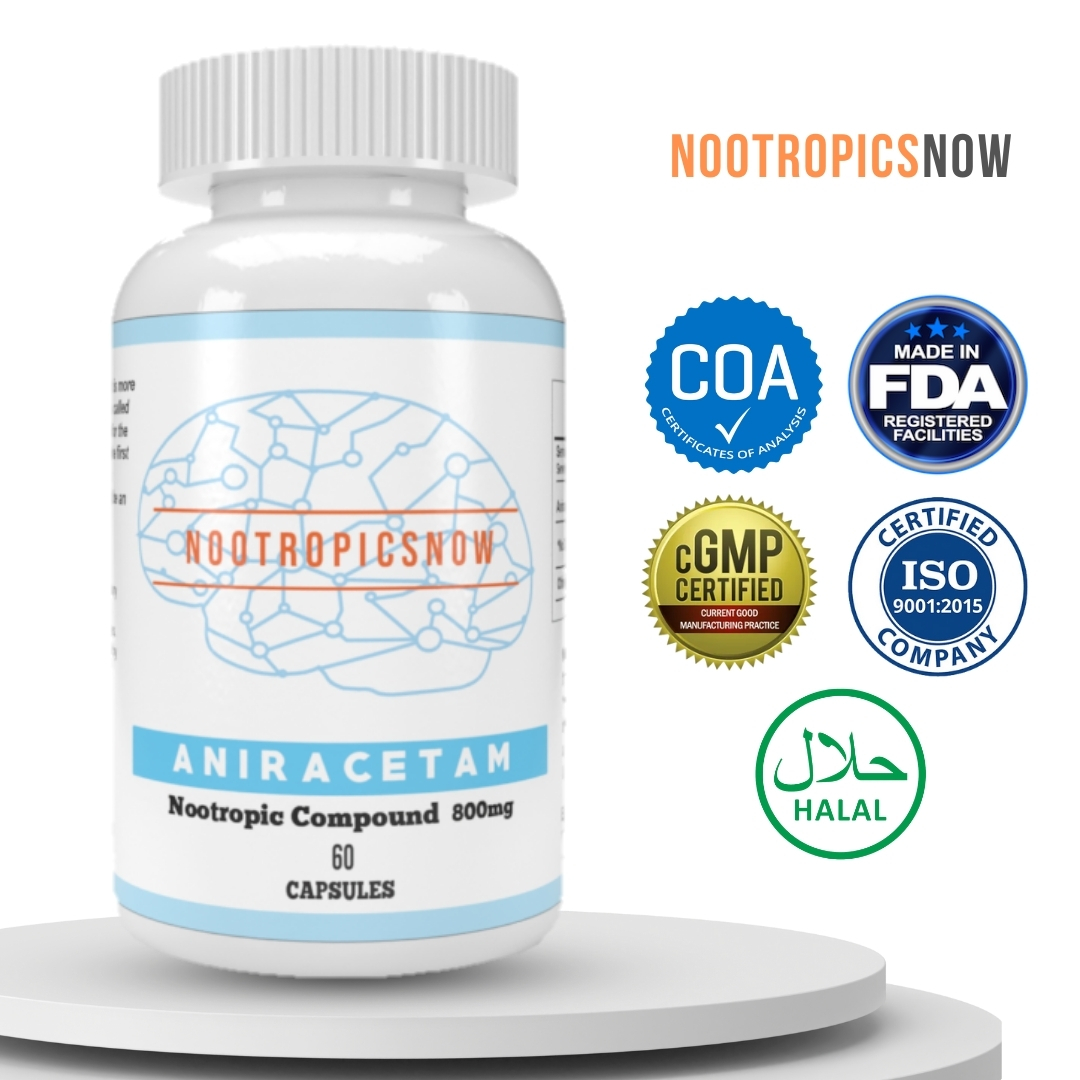
View Product
Oxiracetam: Notably, oxiracetam is reported to have a more stimulating effect than other racetams. It is often used to enhance focus and concentration.
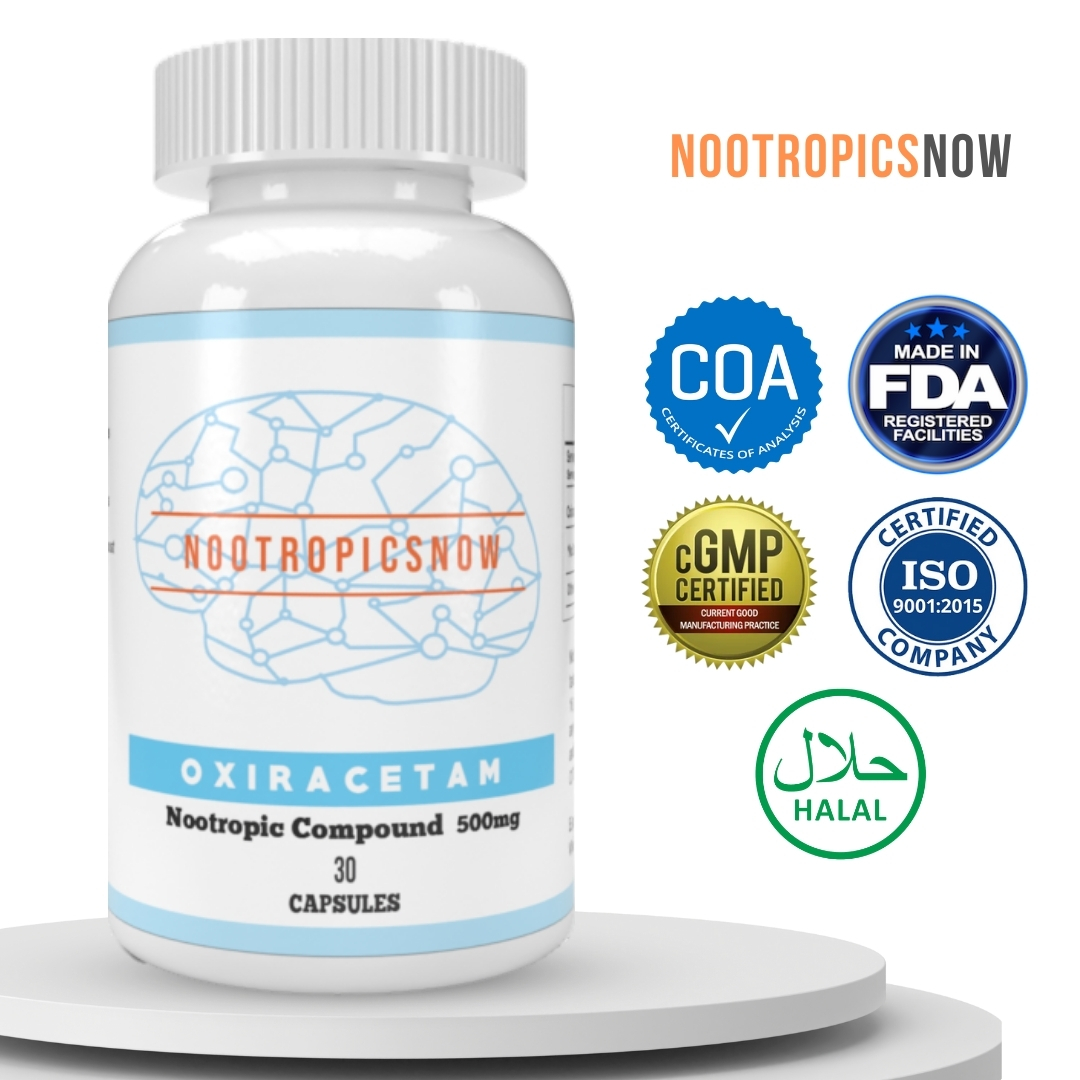
View Product
Pramiracetam: A highly potent racetam known for its ability to enhance memory and learning. However, some users find it less effective without a choline source.
Phenylpiracetam: Phenylpiracetam is a derivative of piracetam with an added phenyl group. Its effects include increased mental energy and cognitive enhancement.
2. Cholinergics
Cholinergics support acetylcholine neurotransmission, which is crucial for memory, learning, and muscle control. By increasing acetylcholine levels, these nootropics can enhance cognitive function and overall brain health.
Alpha-GPC (Alpha-Glycerylphosphorylcholine): Alpha-GPC is a highly bioavailable form of choline that readily crosses the blood-brain barrier. It supports acetylcholine production and is frequently used to enhance memory and cognitive performance.

View Product
CDP-Choline (Citicoline): CDP-Choline is another choline source that supports both acetylcholine synthesis and brain energy metabolism. Research suggests it may improve memory and protect against age-related cognitive decline.
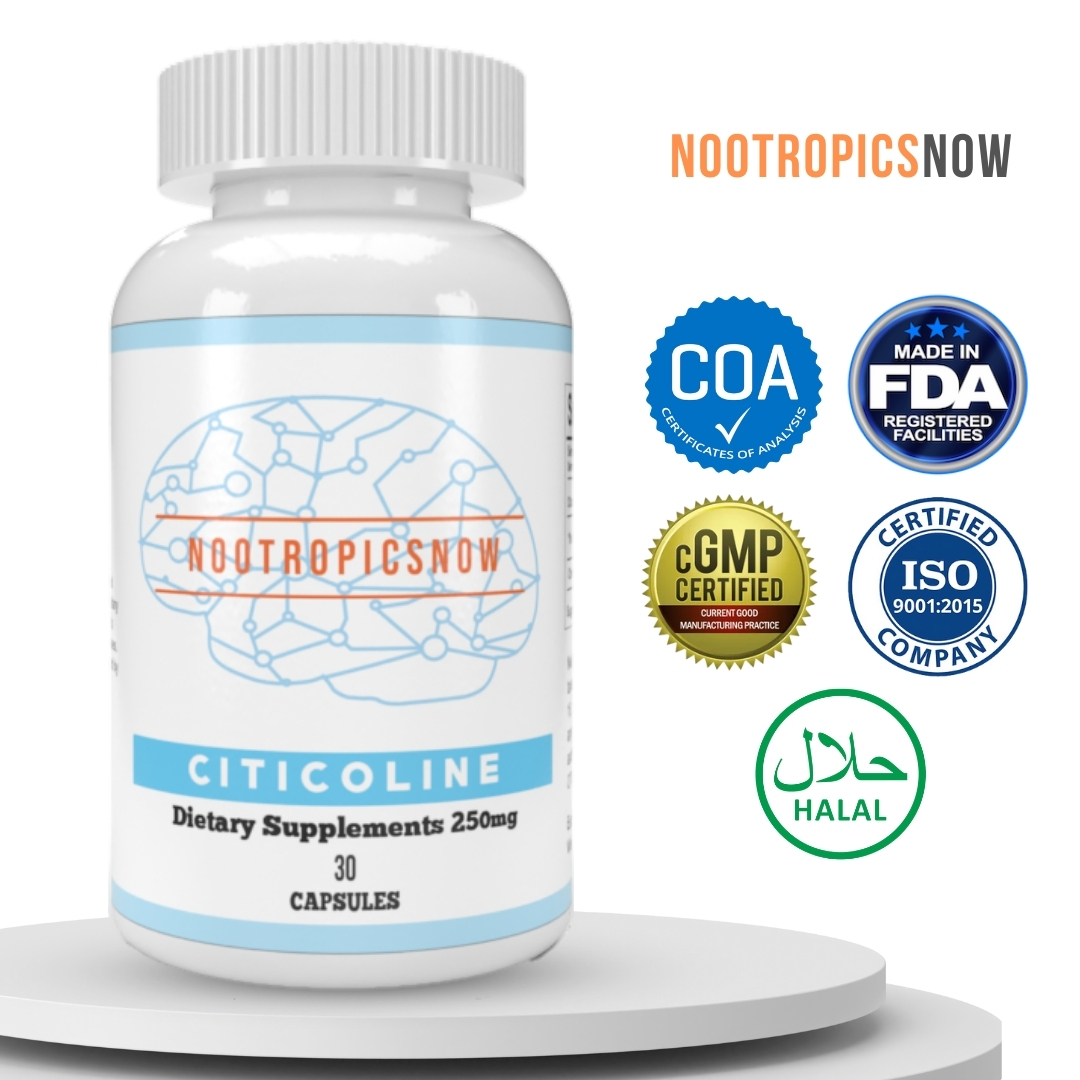
View Product
Choline Bitartrate: Choline bitartrate is a more affordable choline source, but it may be less effective at raising choline levels in the brain compared to Alpha-GPC or CDP-Choline.
3. Adaptogens
Adaptogens are natural substances, typically herbs, that help the body adapt to stress, both physical and mental. They support adrenal function, reduce fatigue, and promote overall well-being.
Rhodiola Rosea: Rhodiola rosea can reduce fatigue, improve mental performance under stress, and enhance mood. Its effects are attributed to its ability to modulate neurotransmitters and reduce cortisol levels.

View Product
Ashwagandha: Ashwagandha helps the body manage stress. It also supports cognitive function and improves sleep quality.

View Product
Panax Ginseng: Panax ginseng may enhance cognitive function, improve memory, and reduce mental fatigue. It is often used to boost overall vitality and mental performance.
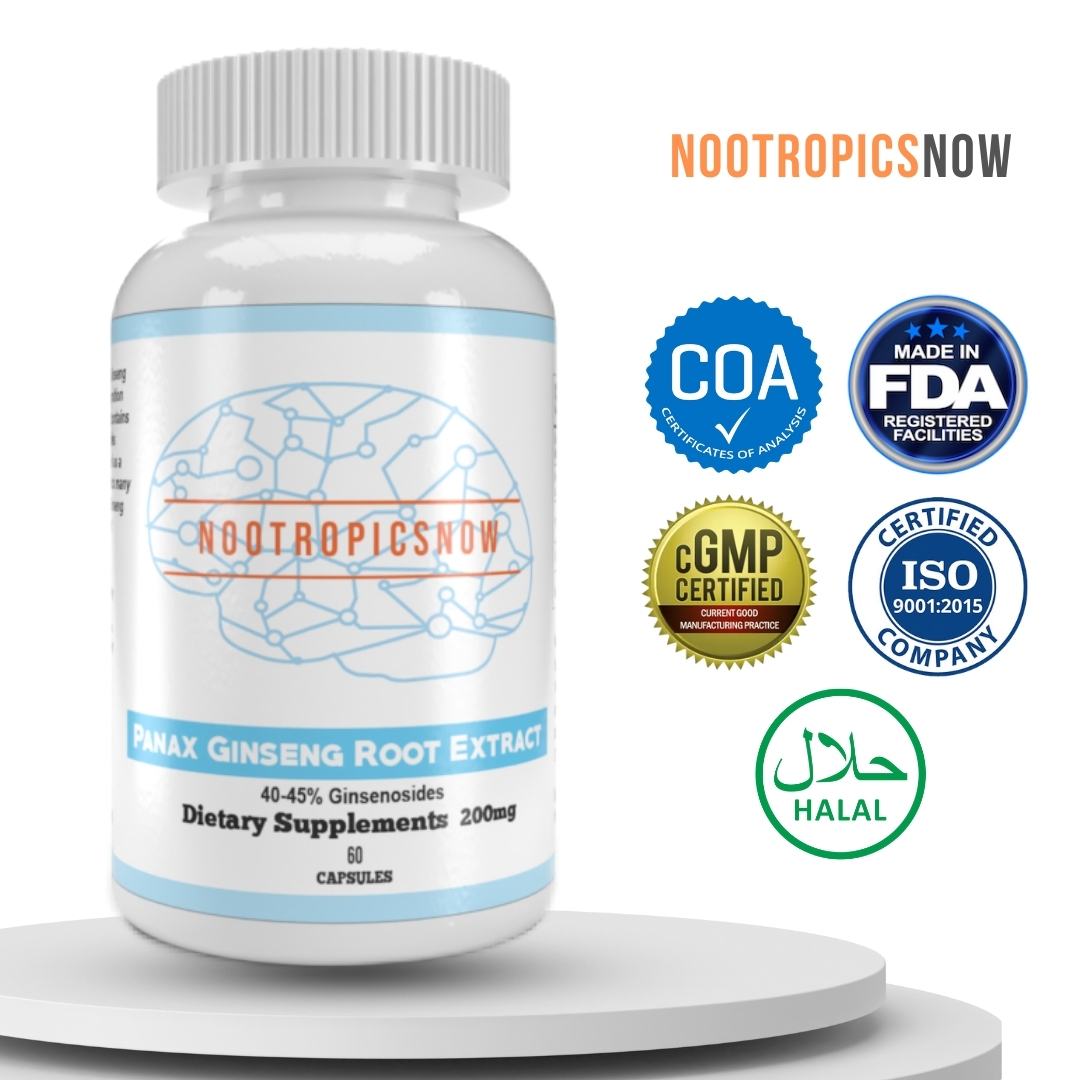
View Product
4. Natural Nootropics
These substances are derived from natural sources and are generally considered safe, providing subtle but beneficial cognitive effects.
L-Theanine: L-Theanine is an amino acid found in green tea known for its calming and focus-enhancing properties. It often works synergistically with caffeine to provide a smooth, sustained energy boost without jitters.
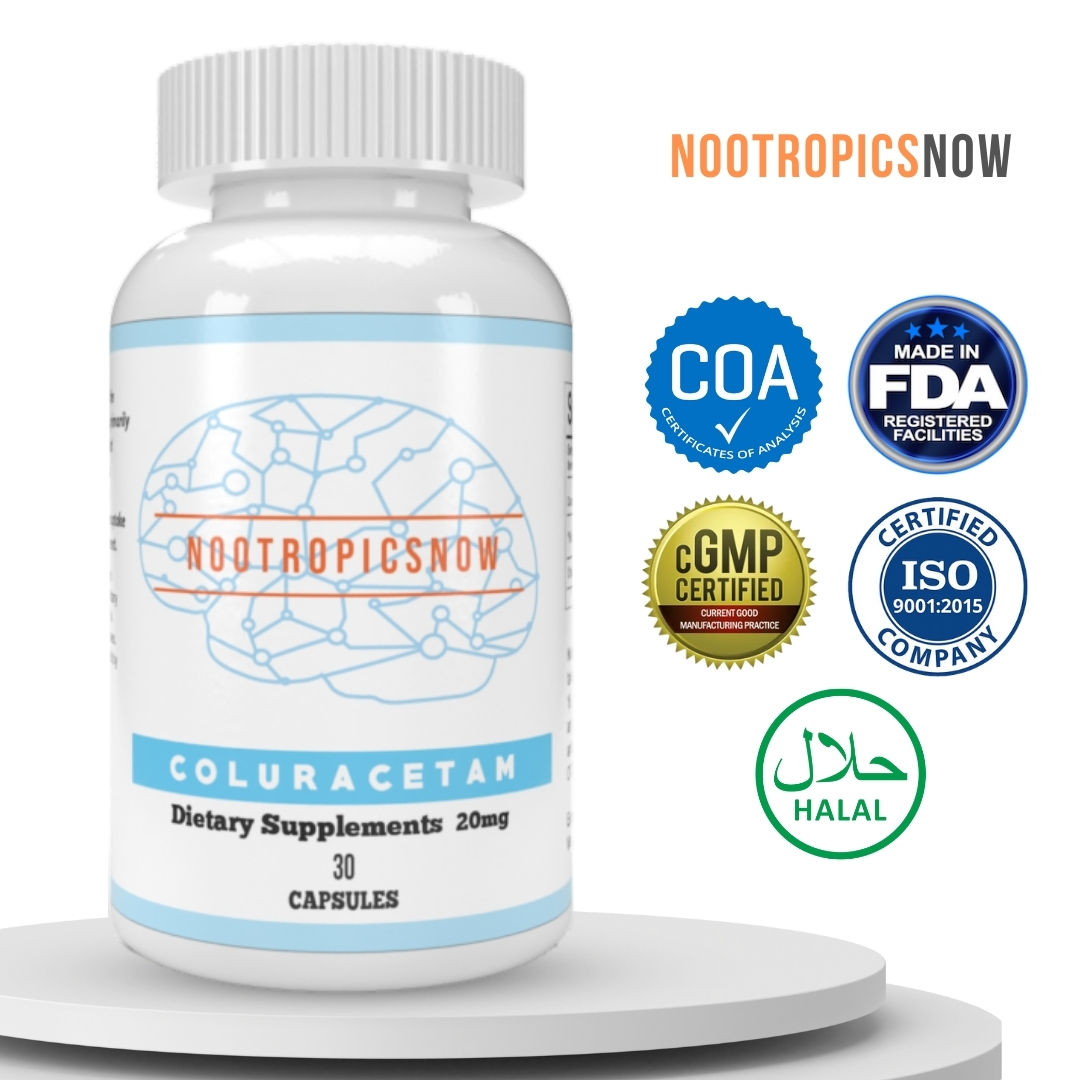
View Product
Caffeine: Caffeine is a widely used stimulant that enhances alertness, focus, and energy levels. However, its effects can vary significantly between individuals, and excessive consumption can lead to anxiety and insomnia.
Bacopa Monnieri: Bacopa monnieri is an herb traditionally used in Ayurvedic medicine to enhance memory and cognitive function. It supports the growth of nerve cells and protects against oxidative stress.

View Product
Lion’s Mane Mushroom: Lion’s mane mushroom contains compounds that stimulate nerve growth factor (NGF) production. It may improve memory, focus, and overall brain health.

View Product
5. Synthetic Nootropics
These are laboratory-created compounds designed to target specific cognitive functions.
Modafinil: Modafinil promotes wakefulness, enhances focus, and reduces fatigue. It is commonly prescribed for narcolepsy and other sleep disorders. It is also widely used off-label for cognitive enhancement.
Noopept: Noopept is a synthetic peptide that may enhance memory, learning, and focus. Many consider it to be significantly more potent than piracetam.
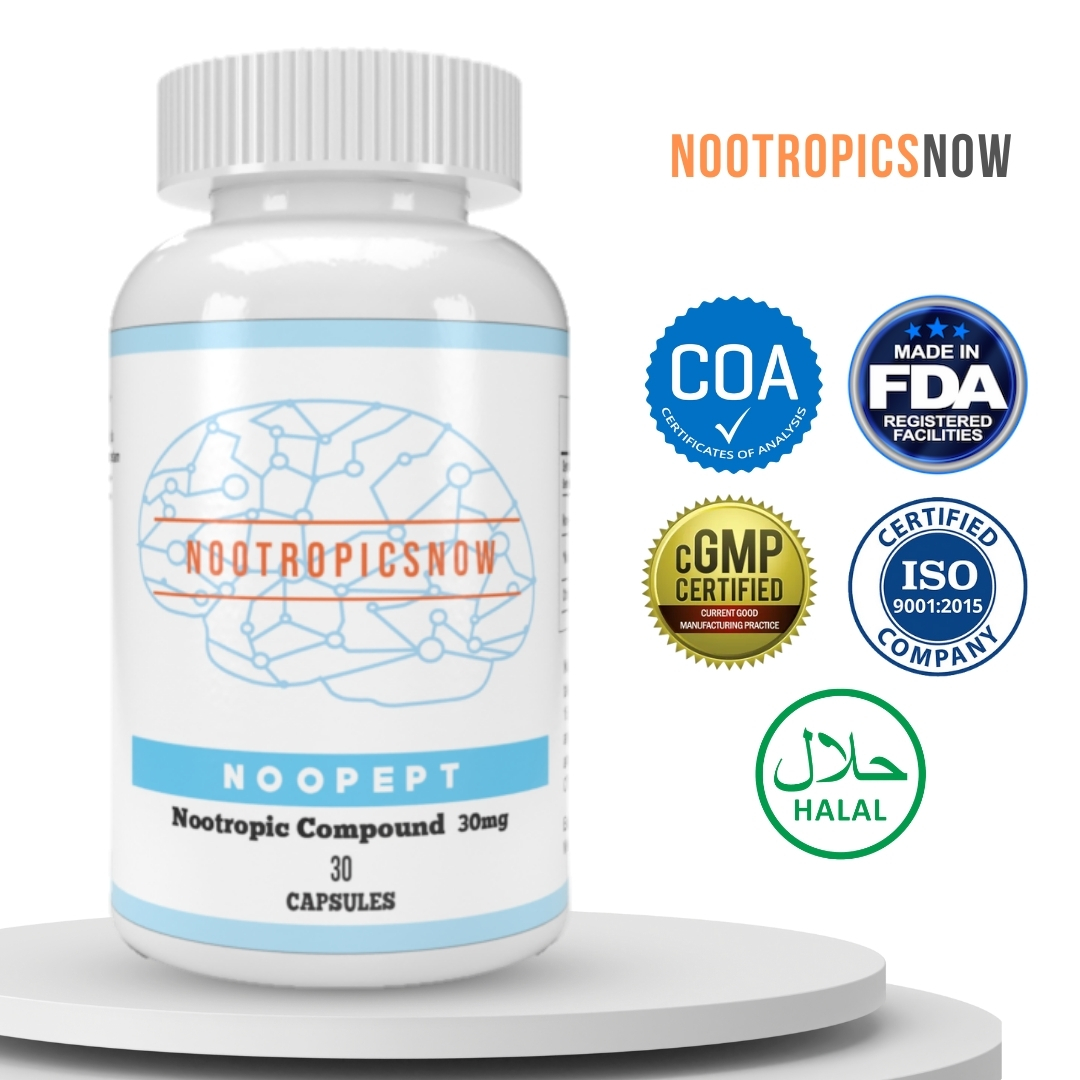
View Product
Benefits of Nootropics
The appeal of nootropics lies in their potential to unlock enhanced cognitive abilities and improve overall mental performance. While individual experiences can vary, the benefits often reported include:
Improved Memory: Nootropics may enhance both short-term and long-term memory, making it easier to learn and recall information.
Enhanced Focus and Concentration: These substances may sharpen focus, allowing users to concentrate on tasks for extended periods without distraction.
Increased Mental Energy: Certain nootropics can reduce fatigue and boost mental energy, helping users stay alert and productive throughout the day.
Enhanced Mood: Some nootropics may have mood-boosting effects, reducing anxiety and promoting a sense of well-being.
Neuroprotection: Many nootropics offer neuroprotective benefits, safeguarding brain cells against damage and age-related decline.
Improved Learning: Nootropics may facilitate learning by enhancing neuroplasticity, the brain’s ability to form new connections.
Mechanisms of Action
Nootropics exert their cognitive-enhancing effects through various mechanisms, influencing neurotransmitter activity, brain metabolism, and neuronal health. Understanding these mechanisms provides insight into how each nootropic works and how they can be used effectively.
Neurotransmitter Modulation: Many nootropics affect the levels and activity of neurotransmitters like acetylcholine, dopamine, serotonin, and glutamate. By modulating these neurotransmitters, they can influence mood, memory, focus, and motivation.
Enhanced Brain Metabolism: Nootropics can improve brain energy metabolism by increasing glucose and oxygen utilization. This enhanced metabolic activity supports overall cognitive function and protects against age-related decline.
Neuroprotection: Some nootropics offer neuroprotective effects, protecting brain cells against oxidative stress, inflammation, and excitotoxicity. These protective mechanisms can help preserve cognitive function and prevent neurodegenerative diseases.
Increased Cerebral Blood Flow: Improving blood flow to the brain enhances the delivery of oxygen and nutrients, supporting optimal cognitive function. Some nootropics achieve this by promoting vasodilation and reducing inflammation.
Enhanced Neuroplasticity: Certain nootropics promote neuroplasticity, the brain’s ability to form new connections and adapt to change. Enhanced neuroplasticity facilitates learning and memory formation, enabling users to acquire new skills and knowledge more easily.
Safety and Side Effects
While nootropics are generally considered safe, it is essential to be aware of potential side effects and take necessary precautions. Individual responses can vary, and some nootropics may interact with medications or underlying health conditions.
Common Side Effects: Common side effects of nootropics include headaches, nausea, insomnia, anxiety, and digestive issues. These side effects are often mild and transient, but they can be bothersome for some users.
Dosage Considerations: Starting with a low dose and gradually increasing it as needed can minimize the risk of side effects. It is also important to follow recommended dosage guidelines and avoid excessive consumption.
Drug Interactions: Nootropics may interact with certain medications, particularly those that affect neurotransmitter activity or blood flow. Consulting with a healthcare professional before using nootropics is crucial, especially if you are taking prescription medications.
Underlying Health Conditions: Individuals with underlying health conditions, such as cardiovascular issues or psychiatric disorders, should exercise caution when using nootropics. Some nootropics may exacerbate these conditions or interact with treatment plans.
Dependence and Tolerance: While rare, dependence and tolerance can develop with some nootropics, particularly stimulants like caffeine and modafinil. Cycling on and off these substances can help prevent tolerance and minimize the risk of dependence.
How to Choose Nootropics
Selecting the right nootropics for your needs involves careful consideration of your cognitive goals, potential side effects, and interactions with medications. Here’s a step-by-step guide to help you choose wisely:
Identify Your Cognitive Goals: Determine what aspects of cognition you want to improve, such as memory, focus, creativity, or mood. Different nootropics target different cognitive functions, so knowing your goals will help you narrow your options.
Research Different Nootropics: Once you’ve identified your cognitive goals, research different nootropics that align with those goals. Read reviews, studies, and user experiences to gather information about their effectiveness, side effects, and interactions.
Consider Potential Side Effects: Be aware of potential side effects and interactions associated with each nootropic. If you have any underlying health conditions or are taking medications, consult with a healthcare professional to ensure it is safe for you.
Start with a Low Dose: Begin with a low dose of the selected nootropic to assess your tolerance and sensitivity. Gradually increase the dose as needed, paying attention to how your body responds.
Monitor Your Progress: Keep a journal to track your experiences, dosage changes, and any side effects. This will help you identify what works best for you and adjust your regimen accordingly.
Cycle On and Off: Consider cycling on and off certain nootropics to prevent tolerance and minimize the risk of side effects. Take breaks between cycles to allow your body to reset and maintain its sensitivity to the substance.
Consult with a Healthcare Professional: It is always a good idea to consult with a healthcare professional before using nootropics, especially if you have any underlying health conditions or are taking medications. They can provide personalized guidance and ensure that it is safe and effective for you.
Stacking Nootropics
Stacking, combining multiple nootropics to enhance their synergistic effects, is a common practice among experienced users. However, approaching this strategy cautiously is essential.
Research Synergistic Combinations: Some nootropics work synergistically, meaning their combined effects are greater than the sum of their individual effects. Researching synergistic combinations can help you maximize cognitive benefits.
Start with Simple Stacks: Begin with simple stacks of two or three nootropics before experimenting with more complex combinations. This will help you identify which substances work well together and minimize the risk of side effects.
Introduce New Substances Gradually: When adding a new nootropic to your stack, introduce it gradually and monitor your response. This will help you identify any potential side effects or interactions.
Be Mindful of Overstimulation: Avoid stacking multiple stimulants, as
Delving into Nootropedia: A Guide to Cognitive Enhancement
“Nootropedia” serves as an encyclopedic compendium of knowledge regarding nootropics. It’s a valuable resource for anyone seeking to understand the science, benefits, and risks associated with cognitive enhancers. Nootropedia aims to consolidate information from diverse sources, including scientific studies, user experiences, and expert opinions, to provide a holistic view of the nootropic landscape.
Understanding the Scope of Nootropedia
Nootropedia encompasses a broad spectrum of substances, from natural compounds to synthetic pharmaceuticals, all purported to enhance cognitive function. This includes memory, focus, attention, creativity, and motivation. The goal of Nootropedia is to present unbiased, evidence-based information, allowing individuals to make informed decisions about which nootropics, if any, are right for them. This information is critical, especially considering the variability in regulation and quality control within the nootropic market.
Navigating the Nootropedia Entry: Key Elements
Each entry within Nootropedia typically includes:
Substance Profile: A detailed description of the nootropic, including its chemical structure, mechanism of action, and historical context.
Benefits: A review of the scientific evidence supporting the claimed cognitive benefits, with citations to relevant studies.
Dosage and Administration: Recommended dosage guidelines based on available research and user experiences.
Side Effects and Safety: A comprehensive overview of potential side effects, contraindications, and safety concerns.
Interactions: Information on known interactions with other drugs, supplements, or medical conditions.
User Experiences: Summaries of anecdotal reports and reviews from users, providing real-world insights into the effects of the nootropic.
Legal Status: An overview of the legal classification of the nootropic in various countries.
Popular Entries in Nootropedia
Several nootropics frequently appear in Nootropedia due to their popularity and extensive research:
Modafinil: A prescription drug primarily used for narcolepsy, but also known for its wakefulness-promoting and cognitive-enhancing effects.

View Product
Piracetam: One of the original nootropics, belonging to the racetam family, with purported benefits for memory and learning.

View Product
L-Theanine: An amino acid found in tea, known for its calming and focus-enhancing effects, often combined with caffeine.

View Product
Alpha-GPC: A choline compound that enhances acetylcholine levels in the brain, potentially improving memory and cognitive function.

View Product
Bacopa Monnieri: An Ayurvedic herb used traditionally for memory and cognitive enhancement.

View Product
Creatine: A naturally occurring compound found in muscle cells, known primarily for its role in muscle energy production, but also with potential cognitive benefits.
Benefits of Using Nootropedia
Nootropedia offers several key benefits for those interested in cognitive enhancement:
Comprehensive Information: Access to a vast database of information on various nootropics, all in one place.
Evidence-Based Content: Information is grounded in scientific research and expert opinions, providing a reliable source of knowledge.
Unbiased Perspective: Nootropedia strives to present information objectively, highlighting both the potential benefits and risks of each nootropic.
User Insights: Inclusion of user experiences and reviews provides valuable real-world perspectives.
Informed Decision-Making: Empowers individuals to make informed decisions about which nootropics, if any, are right for them.
The Importance of Evidence-Based Information
The nootropic market can be confusing, with many products making unsubstantiated claims. Nootropedia emphasizes the importance of relying on evidence-based information when considering nootropics. This includes looking for studies published in peer-reviewed journals, consulting with healthcare professionals, and being wary of exaggerated claims.
Risks and Limitations of Nootropics
While nootropics may offer potential cognitive benefits, it’s important to be aware of the potential risks and limitations. These include:
Side Effects: Nootropics can cause a range of side effects, from mild to severe, depending on the substance and individual sensitivity.
Drug Interactions: Nootropics can interact with other medications, potentially leading to adverse effects.
Lack of Regulation: The nootropic market is often poorly regulated, meaning that product quality and purity can vary widely.
Limited Research: Many nootropics have not been extensively studied, so their long-term effects are unknown.
Placebo Effect: Some of the reported benefits of nootropics may be due to the placebo effect, rather than the actual effects of the substance.
Nootropics and the Brain: Understanding the Science
Understanding how nootropics interact with the brain is crucial for making informed decisions about their use. Different nootropics affect the brain in different ways, influencing neurotransmitter levels, blood flow, and neuronal activity. For instance, Modafinil primarily affects dopamine, norepinephrine, and histamine levels, leading to increased wakefulness and focus. Racetams, on the other hand, are believed to modulate glutamate and acetylcholine neurotransmission.
Ethical Considerations in Cognitive Enhancement
The use of nootropics also raises ethical considerations. Some argue that cognitive enhancement gives an unfair advantage to those who can afford or access these substances. Others express concern about the potential for coercion or pressure to use nootropics in competitive environments. These ethical issues require careful consideration as the use of nootropics becomes more widespread.
Natural Nootropics vs. Synthetic Compounds
Nootropedia distinguishes between natural nootropics, derived from plants or other natural sources, and synthetic compounds, created in a laboratory. Natural nootropics often have a long history of traditional use and may be perceived as safer, though they may also be less potent. Synthetic nootropics, on the other hand, may offer more targeted and powerful effects, but also carry a higher risk of side effects.
Building Your Own Nootropic Stack
Many people experiment with combining different nootropics to create a “stack” that targets specific cognitive goals. However, it’s important to approach stacking with caution, as the effects of combining different substances can be unpredictable. Start with low doses of each nootropic, and gradually increase the dosage as needed, while carefully monitoring for any side effects.
The Future of Nootropedia and Cognitive Enhancement
Nootropedia will continue to evolve as new research emerges and as the field of cognitive enhancement advances. The future of nootropics may involve personalized approaches, tailored to individual genetic profiles and cognitive needs. Additionally, advances in neuroscience may lead to the development of more targeted and effective cognitive enhancers with fewer side effects. Staying informed about these developments through resources like Nootropedia is essential for navigating the ever-changing landscape of cognitive enhancement.
Legal Considerations for Nootropics
The legal status of nootropics varies significantly from country to country. Some nootropics, like Modafinil, require a prescription, while others are available over-the-counter as supplements. It’s important to be aware of the legal regulations in your country before purchasing or using any nootropic substance.
Common Myths About Nootropics
Many misconceptions surround nootropics. One common myth is that they are “limitless pills” that can instantly transform anyone into a genius. In reality, nootropics are not a magic bullet, and their effects are often subtle and variable. Another myth is that all nootropics are safe and free of side effects. As discussed earlier, nootropics can have side effects, and it’s important to be aware of these risks before using them.


















